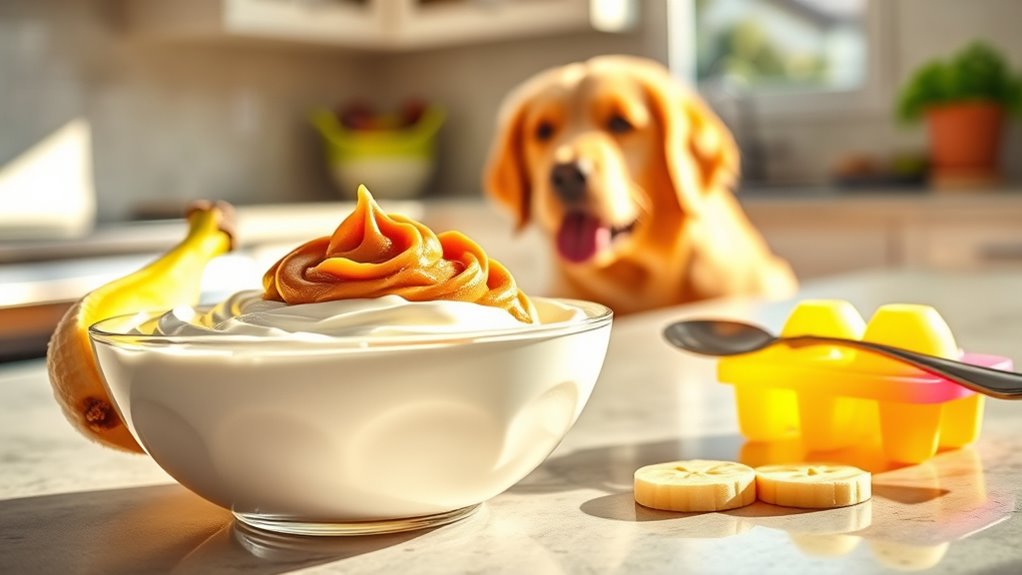Here’s a precise, dog-safe ice cream you can make with yogurt or mashed banana as the creamy base, plus applesauce for texture and a nutty peanut butter flavor. Gather 2 cups dairy-free yogurt or mashed banana, 1 cup applesauce, 1 tablespoon peanut butter, and optional 1 teaspoon honey or maple syrup. Mix until smooth, leaving air pockets out, then portion into molds and freeze. Store frozen, adjust portions by dog size, and you’ll uncover more practical tips ahead.
Ingredients and Quantity
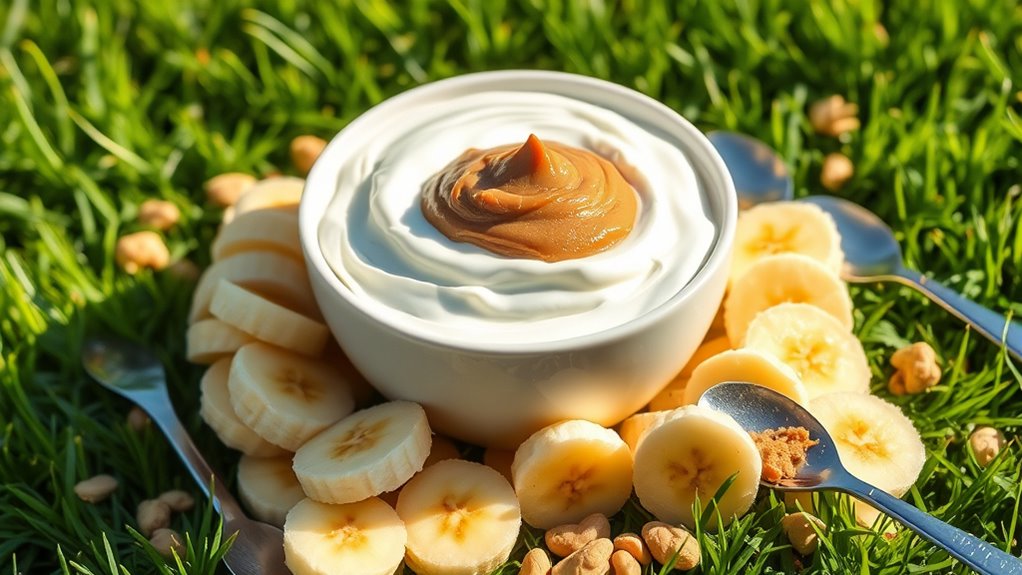
For the Dog Ice Cream Recipe, the ingredients and quantities are as follows: 2 cups plain dairy-free yogurt or mashed banana for creaminess, 1 cup unsweetened applesauce for sweetness, 1 tablespoon peanut butter (xylitol-free) for flavor, and 1 teaspoon honey or maple syrup if a touch of sweetness is desired.
| Item | Quantity | Notes |
|---|---|---|
| Yogurt or Banana | 2 cups | Yogurt benefits vs. Banana options discussed below |
| Applesauce | 1 cup | Keeps texture smooth |
| Peanut Butter | 1 tablespoon | Confirm no xylitol |
| Sweetener (optional) | 1 teaspoon | Honey or maple syrup |
Yogurt benefits guide your choice; Banana options offer alternative creaminess while maintaining texture and freedom in flavor profiling.
Preparations
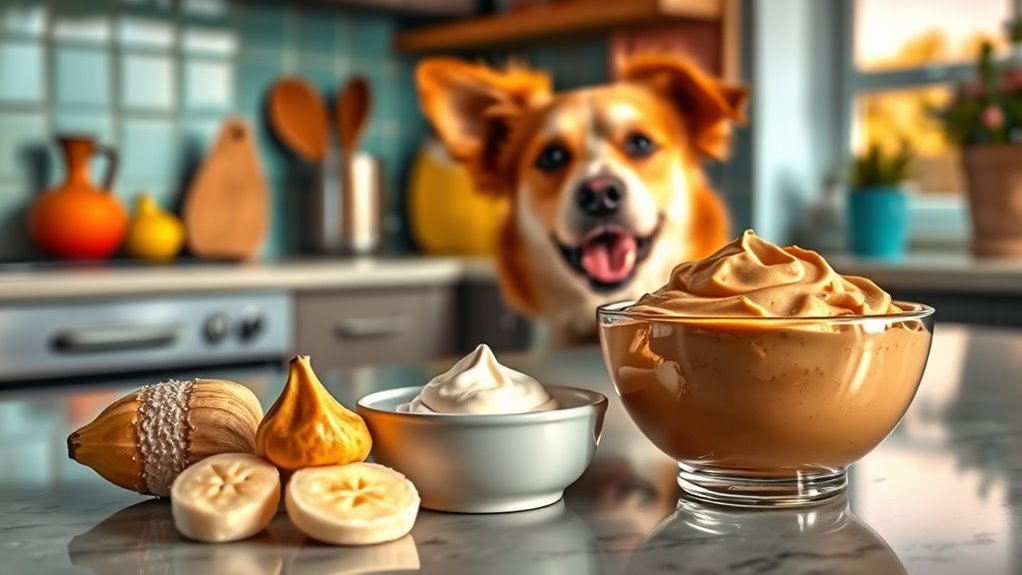
To begin preparations, gather all ingredients and equipment, ensuring the yogurt or banana, applesauce, peanut butter, and optional sweetener are measured and ready. You will set up a clean workstation with a measuring scale, mixing bowl, spoon, and silicone spatula. Verify that yogurt is unsweetened and plain for control over flavor. Combine base ingredients in precise ratios to form a smooth, homogeneous mixture, avoiding air pockets. Chill briefly if your apparatus requires temperature consistency. Portion into molds or a freezer-safe container, leaving space for expansion. Label and date the batch for traceability. Maintain hygiene throughout, prevent cross-contamination, and store equipment until freezing. The result yields dog friendly flavors and frozen treats with predictable texture, aroma, and palatability for canine enjoyment.
How to Cook
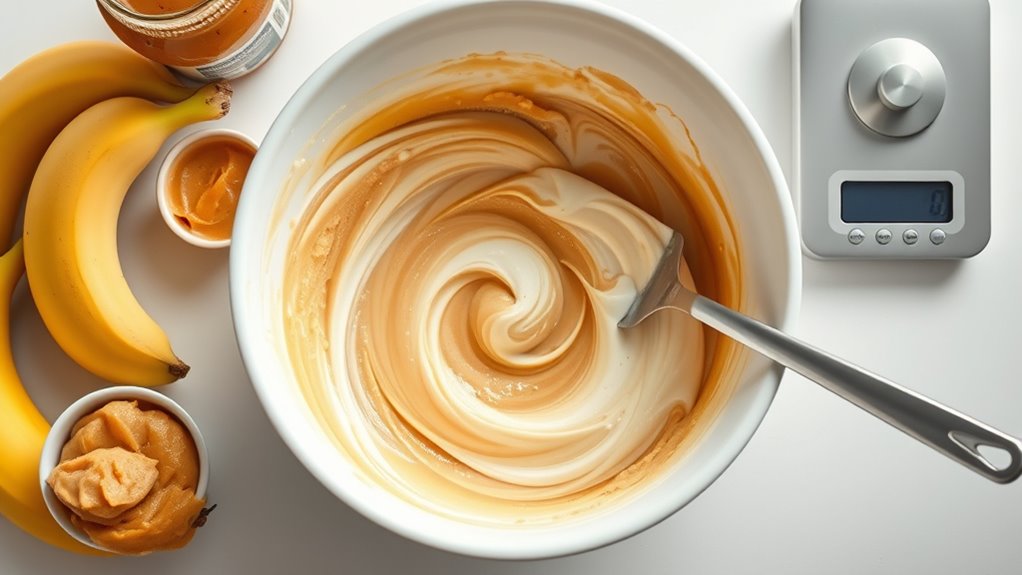
- Assemble all ingredients and equipment: unsweetened yogurt, banana, applesauce, peanut butter, a clean mixing bowl, spoon, measuring scale, and silicone spatula.
- Measure ingredients precisely, focusing on controlled steps to preserve texture and flavor.
- Combine yogurt, banana, and peanut butter in the mixing bowl.
- Fold in applesauce to adjust sweetness and consistency.
- Use precise ratios and test viscosity by dragging the spatula through the mixture.
- Apply cooking techniques that minimize air incorporation to avoid whipped textures; keep motions steady and deliberate.
- Monitor temperature with kitchen tools to ensure ingredients remain cool and nutrients are preserved.
- Chill the mixture briefly if needed.
- Pipe or scoop the mixture into serving vessels.
- Emphasize technique, efficiency, and autonomy throughout the process to achieve consistent, craftlike results.
How to Serve
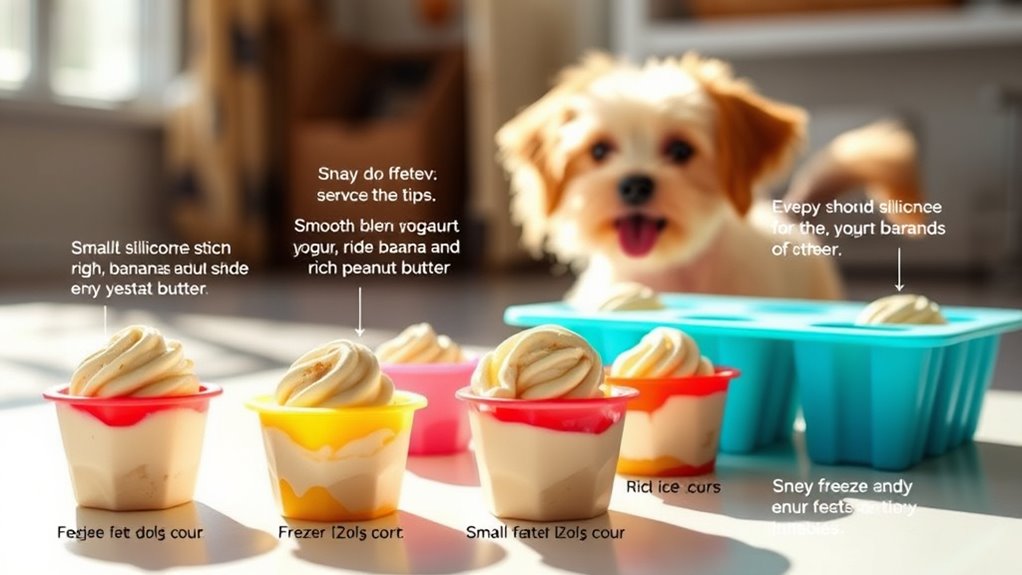
Small yields of dog ice cream should be served in portion-controlled cups or silicone molds, storing any leftovers promptly in the freezer to maintain texture. You’ll present servings with clear labeling and a defined portion plan to prevent overfeeding. Measure portions using cups or a kitchen scale, aligning with recommended portion sizes and your dog’s size, breed, and dietary needs. Offer servings after exercise or as a cooling treat, ensuring you check for any signs of intolerance. Avoid toppings that could upset digestion or trigger allergies; simple serve options emphasize the yogurt, banana, and peanut butter base. Provide guidance on frequency, frequency limits, and scheduling to support long-term health. Serving suggestions emphasize consistency, temperature control, and precise portion sizes for predictable results.
Tips
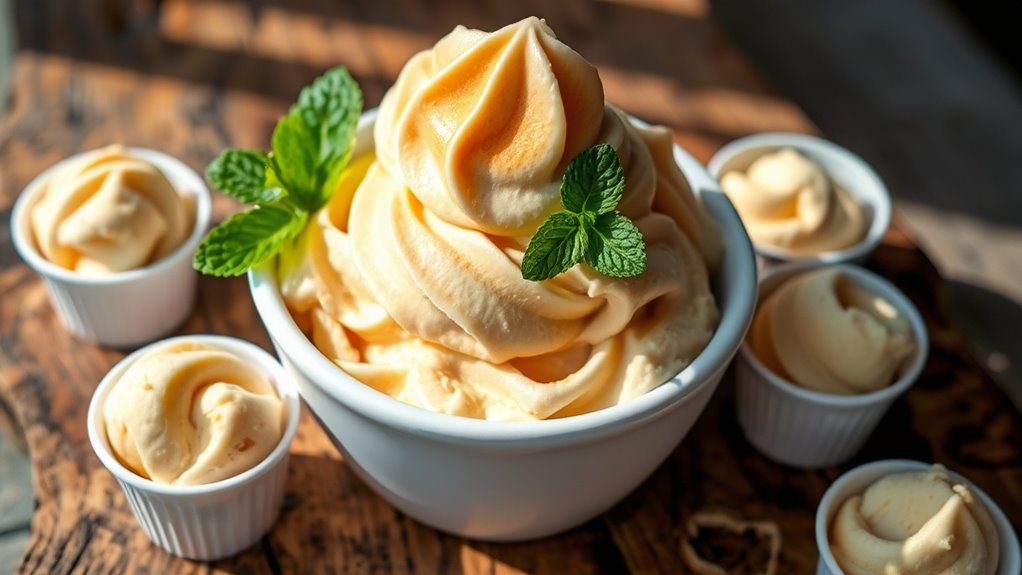
Wondering how to maximize safety and enjoyment, these tips focus on portion control, storage, and monitoring for canine ice cream. You’ll tailor serving sizes to weight and activity, avoiding overuse of dairy, additives, or sweeteners that can upset digestion. For portion control, measure scoops and limit per-session consumption, offering alternatives if your dog shows signs of intolerance. Storage should emphasize freezing in airtight containers, labeling with date and ingredients, and thawing gently to preserve texture. Monitoring requires observing for abdominal discomfort, vomiting, or diarrhea after introduction, and adjusting recipes accordingly. Prioritize dog health by choosing simple, accepted ingredients and avoiding risky substitutions. Homemade treats demand cleanliness, consistent ratios, and safe handling to guarantee a reliable, low-risk experience for your companion.
Food Value and Benefit
The prepared canine ice cream combines yogurt, banana, and peanut butter to create a nutritious treat that supports your dog’s overall health and well-being.
Food Value:
- Protein: High-quality protein from yogurt supports muscle maintenance and repair.
- Calcium: Yogurt provides a good source of calcium, essential for strong bones and teeth.
- Potassium: Bananas contribute potassium, which helps regulate fluid balance and muscle function.
- Healthy Fats: Peanut butter offers healthy fats that supply energy and support skin and coat health.
- Natural Sugars: Bananas provide natural sugars for a quick energy boost without artificial additives.
- Vitamins and Minerals: This recipe contains vitamins B6 and C (from bananas), vitamin E (from peanut butter), calcium (from yogurt), and magnesium and potassium (from bananas).
Benefits of Eating This Recipe:
- Supports strong bones and teeth through calcium intake.
- Aids muscle function and nerve signaling with potassium.
- Provides energy through natural sugars and healthy fats.
- Promotes healthy skin and coat from essential fatty acids.
- Supports digestive health with probiotics present in yogurt.
- Offers an antioxidant boost thanks to vitamins C and E.
- Minimizes risk of food sensitivities by using simple, natural ingredients.
This canine ice cream is a wholesome, tasty treat that can be safely enjoyed in moderation to complement your dog’s daily nutritional needs.
Frequently Asked Questions
Can Dogs Eat Banana Every Day in This Recipe?
Yes, you can give banana daily, but monitor portions. For dog health, small amounts help digestion, but avoid overfeeding. Banana benefits include fiber and potassium. Balance with overall diet and consult a vet if you notice any issues.
Is Yogurt Plain or Flavored Suitable for Dogs?
Plain yogurt is suitable for dogs in moderation; flavored yogurt is typically not. You’ll want plain yogurt benefits, while avoiding flavored yogurt risks like added sugars. You’ll enjoy precise, technical guidance that respects your freedom to choose wisely.
Should Peanut Butter Be Xylitol-Free for Safety?
Yes, you should use xylitol-free peanut butter for safety. Peanut butter safety hinges on avoiding xylitol, which poses serious risks. By choosing brands labeled xylitol-free, you reduce exposure to xylitol risks and protect your dog.
Any Substitutions for Dairy-Free Dogs?
Yes—you can substitute dairy with coconut yogurt, but make certain it’s unsweetened and xylitol-free; add frozen fruit for texture. You’ll get a precise, freedom-forward mix that sustains safety and flavor for dairy-free dogs.
How Long Can the Ice Cream Be Stored Safely?
You can store it up to 1 month in air-tight storage containers, using proper freezing techniques. Freeze promptly in small portions, label with date, and thaw safely before serving to preserve texture and prevent ice crystals.
